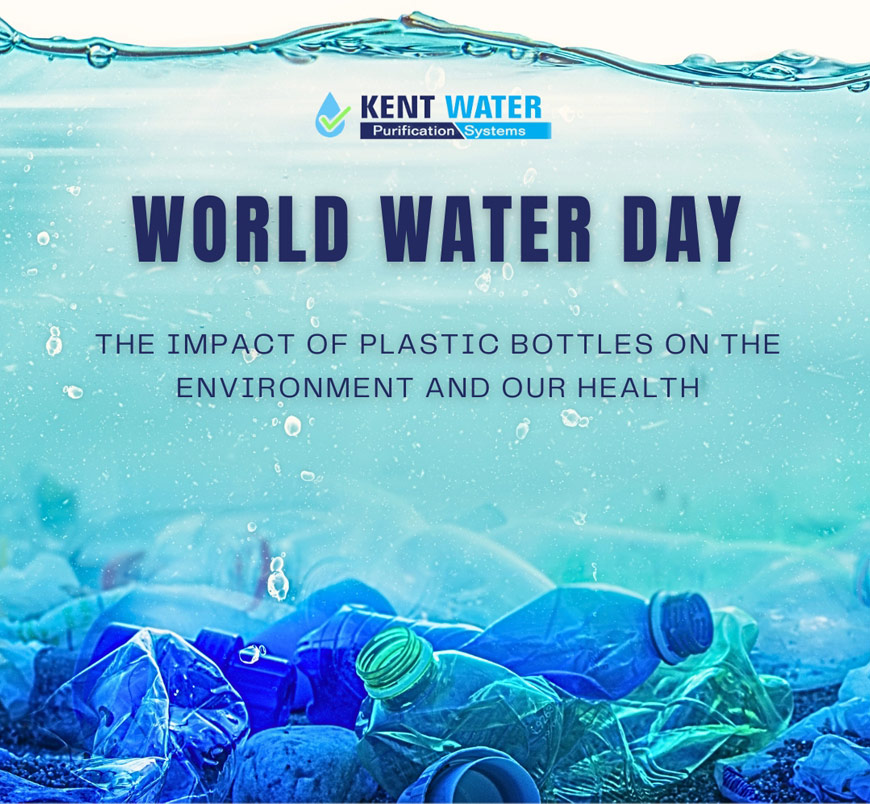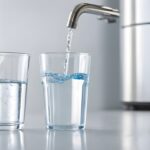Water is a fundamental element of our existence. However, how we consume water significantly impacts our environment, living conditions, and the future of our planet. Over the last few decades, it has gone the wrong way with the continuing surge in the use of plastic water bottles. For World Water Day, we will explore a comprehensive overview of the environmental impact of plastic water bottles, and how we can take action to make a difference.
The Plastic Water Bottle Industry
Take a picture: more than 1 million bottles of water are sold every minute around the world. Yes.
The global bottled water market is one of the fastest-growing industries in the world, reaching US$333.2 billion in 2023, and using about 2.7 million tons of plastic each year to fill up roughly 600 billion plastic bottles with 350 billion water liters. But this global success comes at a huge environmental, climate, and social cost.
Plastic Water Bottles and the Environment
First of all, the production of plastic water bottles has a significant carbon footprint, due to the nature of their raw materials and manufacturing process. For the short chemistry lesson, plastic water bottles are made using high-energy methods that consume large quantities of fossil fuels such as petroleum. Regarding volume, in Canada, more than 17 million barrels of oil are required to meet the demand for plastic water bottles. Overall, from manufacturing to disposal, the water bottling process releases 2.5 million tons of carbon dioxide into the atmosphere annually, which greatly contributes to global warming.
But manufacturers also contribute to climate change through the extraction of groundwater, the main source of bottled water. This groundwater is obtained at a low cost from public water sources, leading to over-extraction and the depletion of aquifers and other resources, irrespective of drought or water shortage. With so few restraints, the impact of drainage processes poses a direct threat to drinking water resources and exacerbates the world’s plastic pollution crisis.
The truth about recycling
Now we have set the scene with the consequences of plastic water bottle production, let’s talk about what bottles become after being emptied, starting with recycling. Hold on to your hats.
While recycling has been assimilated into our habits as a civic gesture, the reality is, however, far from rosy: less than 9% of plastic waste is actually recycled, and the remaining 91% ends up in nature, landfills, incinerators, or is sent to developing countries, producing toxic air emissions. As for plastic water bottles, around 85% end up as waste, adding 38 billion disposable bottles to Canadian landfills.
Chocking oceans, overflowing landfills
That being said, let’s focus on the problematic question of plastic’s final destination.
Plastic is a major concern for our oceans, with more than 8 million tons of plastic waste dumped into the ocean annually. One-third of species become entangled in our trash and ingest it, eventually killing 1.1 million marine beings. Nationally, Canadians consume approximately 2.5 billion liters of bottled water annually, which results in 10,000 tones of plastics entering the Great Lakes every year.
But what you need to know is that plastic also affects our lands. Canada is home to about 2.400 active landfills, where chemicals and heavy metal leak into the ground and, inevitably, water. About 2.8 tones of plastic end up in our landfills per year – equivalent to the weight of 24 CN Towers, whose capacity in Ontario is expected to reach its maximum by 2032.
Tap vs Bottles
So, if plastic is so harmful to our environment, why do people keep buying bottled water? Bottled water is often considered healthier and tastier than tap water, and is marketed as a pure product. Moreover, it is a convenient disposable option to drink water on the go. But bottled water is not as safe as you would think. Indeed, drinking water from plastic bottles is also noxious to health: as plastic is not biodegradable, it splits into smaller pieces, creating micro- or Nano plastics that carry all kinds of chemical components absorbed by cells, which affects our health system and can cause endocrine alterations, identified as causing cancer.
Additionally, bottled water is subjected to way less strict quality regulations than tap water, for which municipalities ensure compliance with rigorous safe drinking water standards. For instance, Toronto tests water samples every four hours and checks for more than 300 potential contaminants.
Considering the cost, you can imagine plastic bottles are more expensive than tap water. Bottled water can cost from about $0.16 to $5.00 per liter, meanwhile, tap water costs Canadians about $0.001 per liter! Also, up to 45% of bottled water in Canada comes from the same sources as municipal tap water, so you might actually be drinking bottled tap water that you could almost get for free.
Think Bigger – Make a difference
Addressing plastic waste is something that anyone can participate in. It is now time to think bigger and make a difference.
Here is what you can do:
Stop buying plastic water bottles (of course).
Invest in sustainable water solutions for your household and get the highest water quality.
Kent Water’s whole house and under-sink water filtration systems employ rigorous treatment methods, including reverse osmosis remineralization, and filtration technologies to remove contaminants such as chloramine and other chemicals. This ensures a comprehensive purification process and provides you with tastier tap water.
By choosing Kent Water’s water filtration systems, you reduce your environmental footprint, drink better quality water, and save money. Want to take action? Visit our website or contact us for advice, book a free water test, and contribute to a better future with us!



